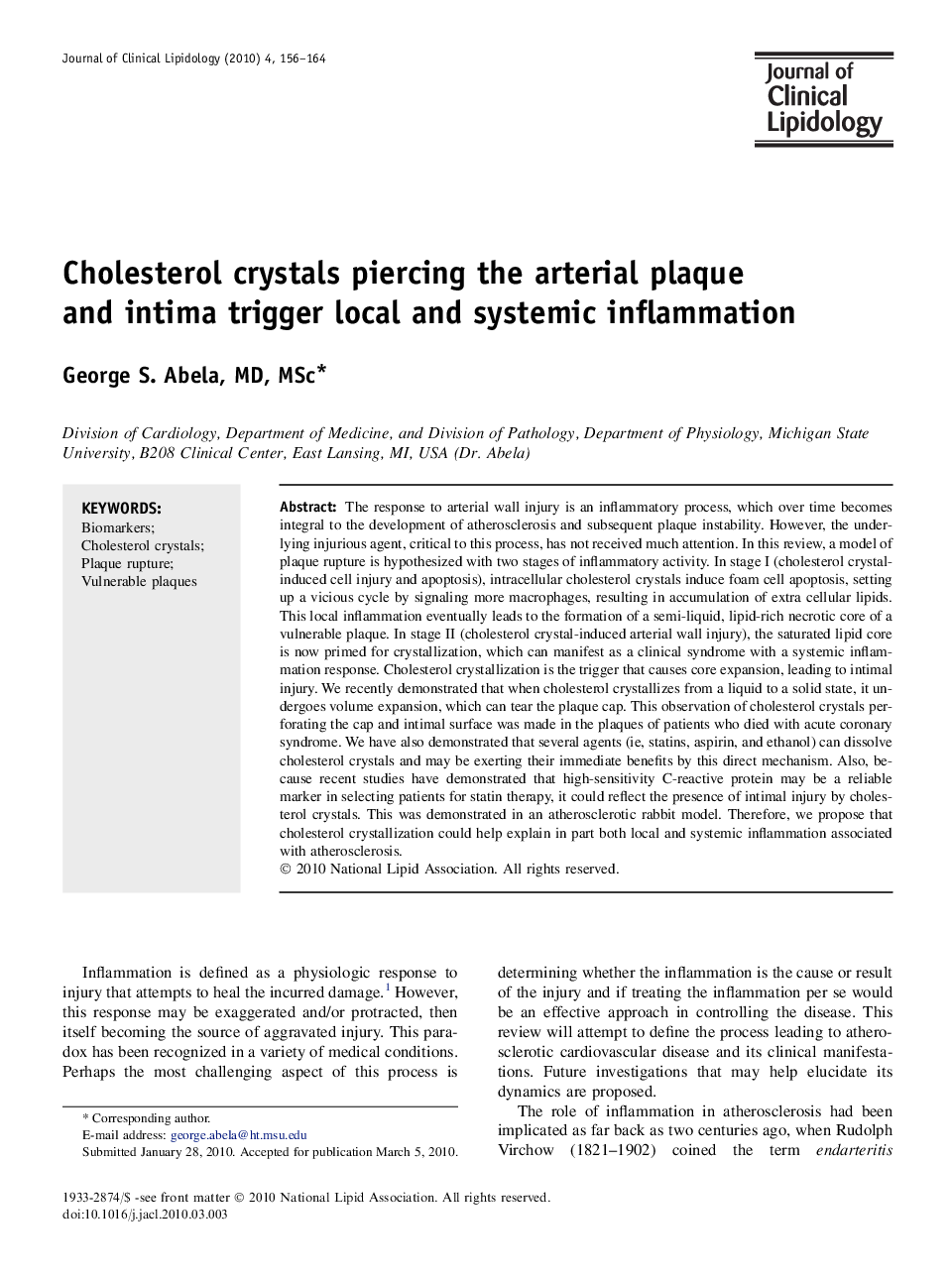| کد مقاله | کد نشریه | سال انتشار | مقاله انگلیسی | نسخه تمام متن |
|---|---|---|---|---|
| 2966398 | 1178807 | 2010 | 9 صفحه PDF | دانلود رایگان |

The response to arterial wall injury is an inflammatory process, which over time becomes integral to the development of atherosclerosis and subsequent plaque instability. However, the underlying injurious agent, critical to this process, has not received much attention. In this review, a model of plaque rupture is hypothesized with two stages of inflammatory activity. In stage I (cholesterol crystal-induced cell injury and apoptosis), intracellular cholesterol crystals induce foam cell apoptosis, setting up a vicious cycle by signaling more macrophages, resulting in accumulation of extra cellular lipids. This local inflammation eventually leads to the formation of a semi-liquid, lipid-rich necrotic core of a vulnerable plaque. In stage II (cholesterol crystal-induced arterial wall injury), the saturated lipid core is now primed for crystallization, which can manifest as a clinical syndrome with a systemic inflammation response. Cholesterol crystallization is the trigger that causes core expansion, leading to intimal injury. We recently demonstrated that when cholesterol crystallizes from a liquid to a solid state, it undergoes volume expansion, which can tear the plaque cap. This observation of cholesterol crystals perforating the cap and intimal surface was made in the plaques of patients who died with acute coronary syndrome. We have also demonstrated that several agents (ie, statins, aspirin, and ethanol) can dissolve cholesterol crystals and may be exerting their immediate benefits by this direct mechanism. Also, because recent studies have demonstrated that high-sensitivity C-reactive protein may be a reliable marker in selecting patients for statin therapy, it could reflect the presence of intimal injury by cholesterol crystals. This was demonstrated in an atherosclerotic rabbit model. Therefore, we propose that cholesterol crystallization could help explain in part both local and systemic inflammation associated with atherosclerosis.
Journal: Journal of Clinical Lipidology - Volume 4, Issue 3, May–June 2010, Pages 156–164